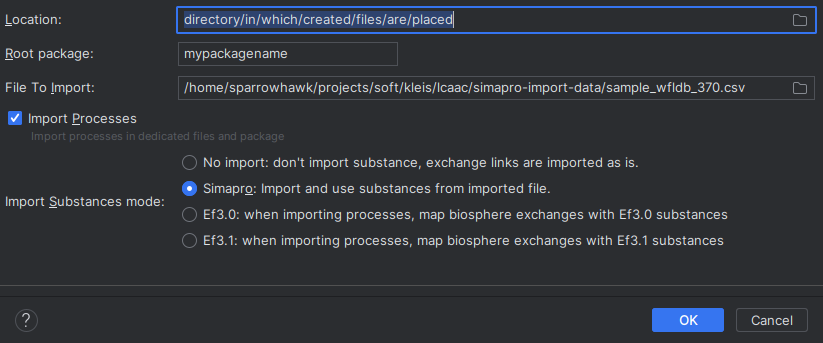Import Simapro Library
It is possible to import into an LCA as Code project an export from Simapro in Simapro CSV format. Open the "Files" menu, and follow into "Import" and finally select "Simapro Library".
Import menu

You will then be offered the following options:

Location
This is the directory on your computer where the imported files will be stored.
Usually, this directory will be somewhere within the project you are working
on so that you can include the imported processes in your project. The import
process will create a file called main.lca containing a summary of the import,
a file called units.lca containing all the required units for the imported
exchanges, and a directory called processes containing all the activities,
grouped by category.
Root Package
This field allows you to set a package declaration to be written at the top of
the imported files. This allows you to scope your data, and you will need to add
an import statement towards your library in your project.
File to Import
This field is used to fill in the location of the archive file
containing the library you want to import, for example simapro-project-export.csv.
Import Substances mode
This option enables you to choose how the import system should deal with substances, i.e. biosphere exchange targets. You may:
- No Import: do not import biosphere exchange targets, leaving the user to later define the substances in the exchanges. Useful if you are only making an inventory or a supply analysis.
- Simapro: import and use as-is substances defined in the Simapro CSV file.
- EF3.0: map the biosphere exchange targets to their equivalents in the EF3.0 method nomenclature, so that the builtin
ef30library can be used to compute impact factors. - EF3.1: map the biosphere exchange targets to their equivalents in the EF3.0 method nomenclature, so that the builtin
ef31library can be used to compute impact factors.
Conclusion
After the import, you will find in your project new lca files containing the imported model, from which you can then use processes and substances as from any other usual LCA as Code project.